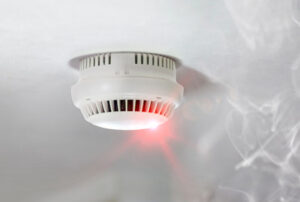 A shift is underway in home security products. Since the 2015 timeframe, when the first smart home doorbells began to attract more serious attention, tech-first companies, such as Amazon and Google, and established home security companies, such as ADT and Brinks, have begun to release a steady stream of smart products. While Amazon and Google are still relative newcomers—having jumped into the market through the acquisition of Ring and Nest, respectively—ADT and Brinks date back to the mid-19th century. The fact that older home security companies are adopting wireless connectivity, remote monitoring by smartphone, and often, some level of artificial intelligence/machine learning to improve accuracy, is telling.
A shift is underway in home security products. Since the 2015 timeframe, when the first smart home doorbells began to attract more serious attention, tech-first companies, such as Amazon and Google, and established home security companies, such as ADT and Brinks, have begun to release a steady stream of smart products. While Amazon and Google are still relative newcomers—having jumped into the market through the acquisition of Ring and Nest, respectively—ADT and Brinks date back to the mid-19th century. The fact that older home security companies are adopting wireless connectivity, remote monitoring by smartphone, and often, some level of artificial intelligence/machine learning to improve accuracy, is telling.
Yet, there’s still room for improvement. Homeowners want the ability to upgrade to newer systems that offer remote monitoring capabilities. They also want security systems that go beyond intrusion detection to monitor the home for smoke and carbon monoxide (CO). This puts homeowners in an awkward position: They want to ensure the health and well-being of themselves and their families, but they don’t want to feel forced to replace their existing smoke and CO detectors that still have many years left of working life, just because they aren’t compatible with their newly upgraded security system. Since no one likes to waste money replacing still-operational equipment, homes that have multiple brands of devices for their intrusion alarm, glass break sensor, smoke detector, smart doorbell, etc.—as well as a hybrid of wireless, battery-powered, and hardwired products— remain vulnerable since they generally have individual components that don’t talk to one another, or to the police or fire department.
The good news is that there’s a new option. Many of the current components of security systems – alarm panels, glass break sensor, smart doorbells, etc. – already contain microphones. And since smoke alarms and carbon monoxide alarms emit the same specific, easily identifiable tones everywhere (T3 for smoke, T4 for CO), wouldn’t it be more efficient to incorporate T3/T4 tone detection into these other microphone-enabled security system components?
The AML100 makes it possible with accurate, near-zero power T3/T4 tone detection. With a fully analog machine learning processor (analogML) that can identify T3/T4 tones directly from analog microphone data, security system manufacturers can now integrate smoke and CO tone detection into their existing battery-operated system components. Finally homeowners can enhance their home monitoring without wasting money on new detectors or importantly, sacrificing the battery life of existing components.